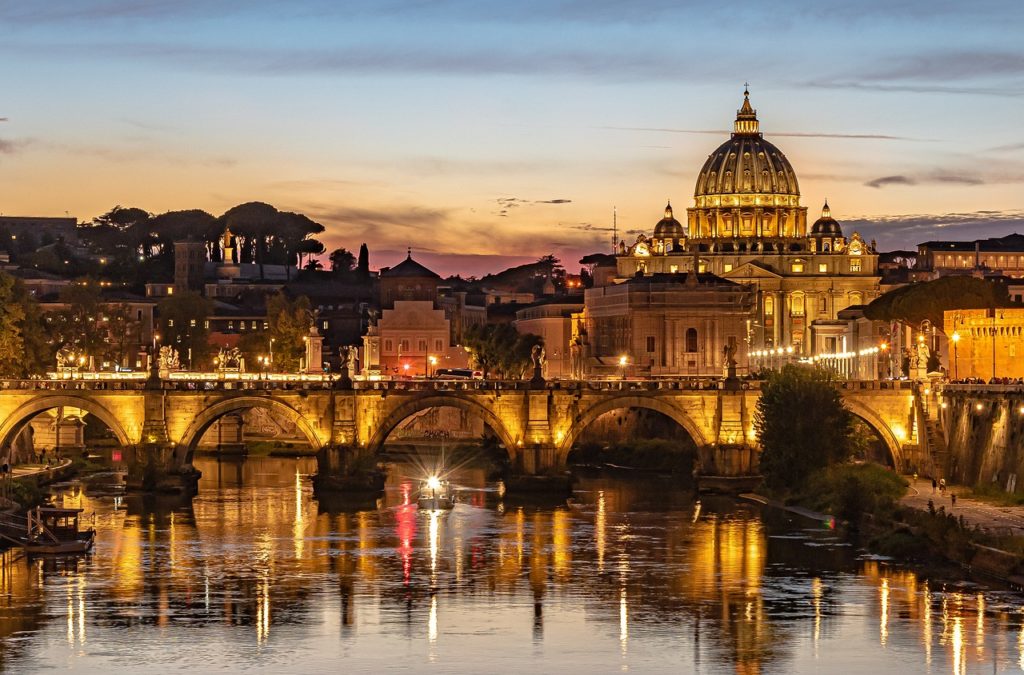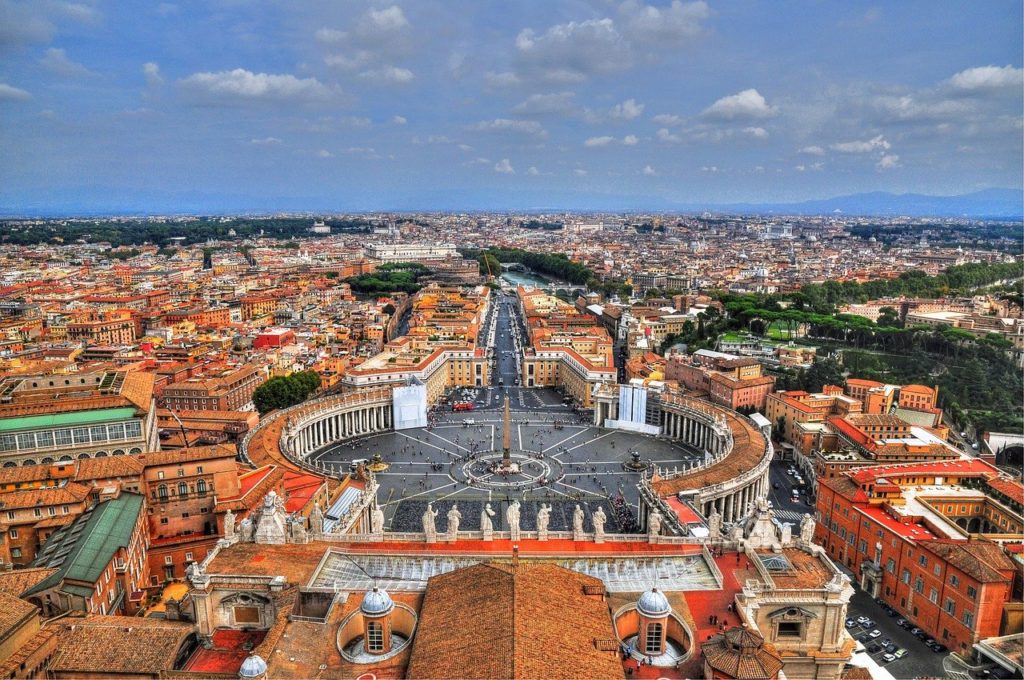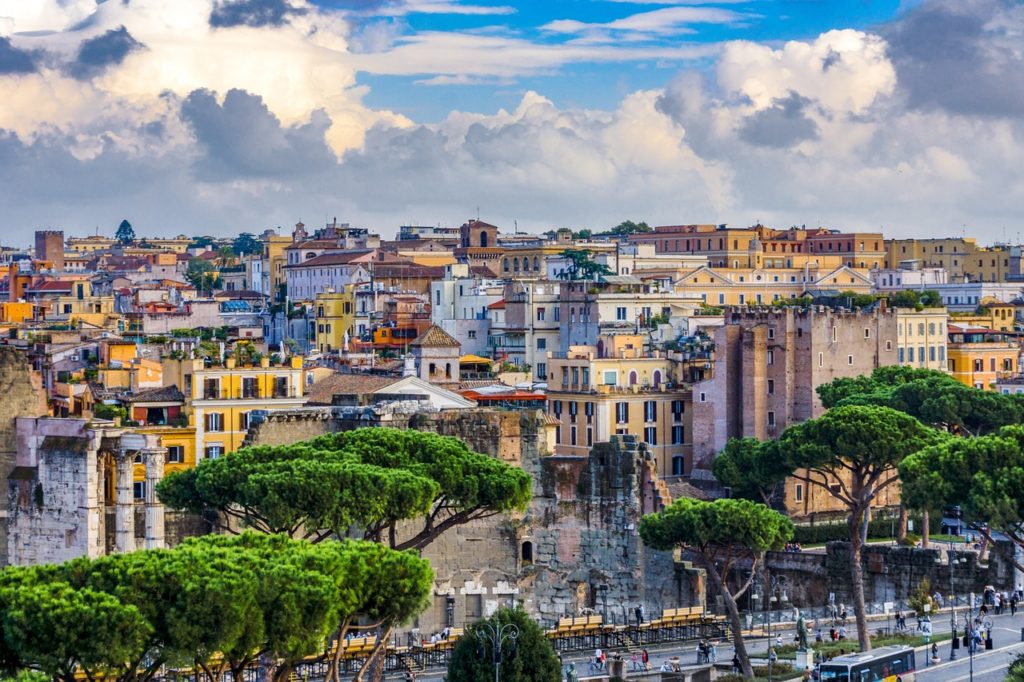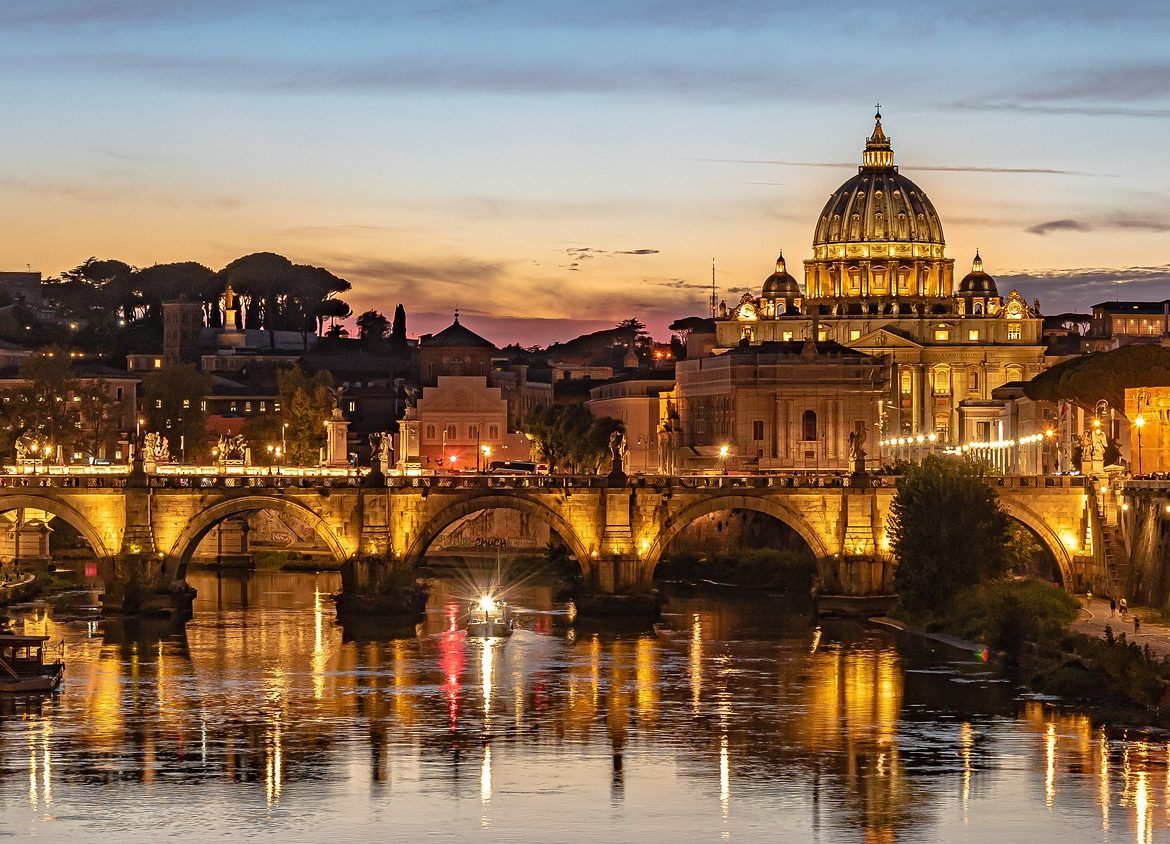Best Travel Guide for Rome in 2022

Rome is one of the most charming and historical places in the world. People who go to Rome can find a lot to do and see. There are a lot of cobblestone streets, beautiful buildings from the past, and relics that date back more than 2000 years. Surely you will be amazed to see the charm of Rome.
Many travelers come to Rome regularly, as there is far more to see and do than you can see in a single visit. When it’s time to unwind, you’ll find yourself confused for choice with tiny restaurants and cafes which provides delectable traditional Italian cuisine and fine wines. If you love to dance the night away, Rome’s authentically Mediterranean nightlife culture caters to all preferences.
Rome is teeming with cultural activities around every turn and is home to some of the world’s most awe-inspiring ancient artwork, including Michelangelo’s Sistine Chapel masterpieces. Rome, affectionately known as the Eternal City, is present on the banks of the Tiber River inside the confines of seven hills.
Why Should You Visit Rome?
Rome is a historic city. That means that wherever you walk in the town, you’re bound to come across some incredible historical structures. Some of those historic structures are not so old – there are numerous Renaissance (and other eras) marvels to explore as well. The palazzi and piazze that dot the city are all kinds of lovely.
Much of this is due to the Popes’ power. Over hundreds of years, they and their aristocratic families commissioned an unlimited number of public and private works to establish a unified architectural style in the city.
Architects, along with painters and sculptors, came to Rome, where they constructed many of the city’s famous pieces of architecture. A large portion of the Centro Storico is UNESCO-listed. That’s not even taking into account the Colosseum, which is one of the biggest reasons to visit Rome!
A Brief History of Rome:
Let’s take a look at Rome historical background. Rome is not just limited to Italy, as the city has reigned over other countries such as Greece and legally incorporated into France during Napoleon’s reign. Rome became the capital of the newly recovered Italian Republic in 1870 and has now evolved as one of history’s most pivotal cities.
According to legend, the city was founded in 753 B.C. by twin brothers Romulus and Remus. The brothers, raised by a she-wolf, argued over who should govern, and Romulus eventually killed Remus and renamed the city Romulus. Roman civilization transitioned from monarchy to republic to empire over the centuries.
The very earliest headquarters of the Roman Empire was located in Rome, as was the Roman Catholic Church. Julius Caesar, the Roman Empire’s most famous dictator, became Rome’s first emperor (in all but name) and one of the city’s most historically significant residents.
How to get to and around Rome?
Getting to the place
By Airports
Rome has two airports: Leonardo da Vinci International Airport (FCO) and Ciampino.
Leonardo da Vinci International Airport (CIA)
Leonardo da Vinci Airport also called Fiumicino Airport, is used chiefly for scheduled flights and is connected to the city via a direct train service called The Leonardo Express. It is a non-stop service that runs roughly 30 minutes from Fiumicino Airport to Rome Termini and costs approximately $16 (€14).
Ciampino Airport is served chiefly by chartered aircraft and European discount carriers. To reach Rome’s city center from Ciampino airport, take a bus to Ciampino town center and then a regional train to Rome. It would cost approximately $3 (€2.50). you can book some best and reasonably priced flights to Rome via www.aviasales.com
Getting to and from place
By Metro
The metro is an excellent option for tourists to get around the city, designed for commuters. The metro system cuts through the town in a large ‘X’ and includes stops near most of the city’s major attractions. You can travel from Termini to several of the city’s major attractions via train stations, including the Colosseum, Piazza Barberini, and the Spanish Steps.
The metro operates between 5:30 am and 11.30 pm, with tickets available at metro stations, newsstands, and convenience stores. If you intend to travel by rail for more than a handful of journeys, you can save money by getting a travel card.
By Bus
The city’s bus system is highly reliable and affordable, with stops at practically all significant areas of interest. Additionally, there are night bus routes that operate until 5 am. A single bus journey costs approximately $2 (€1.50), and bus tickets are readily available at any Metro station, newsstand, or convenience store.
On Foot
Many people choose to explore the city on foot to enjoy all on offer fully. However, many of the meandering streets look cobbled, so bring appropriate footwear if you wish to see many attractions.
Taxis
While private taxis are available to transport visitors about the city center, they are not particularly popular with tourists because of their reputation for overcharging. If you think to take a taxi, it is prudent to discuss the fare with the driver before boarding the cab.
Top 10 Things to Do in Rome:

1. The Spanish steps
The Spanish Steps were initially built to connect the church of Trinita dei Monti to the Spanish Square beneath Piazza di Spagna. The Spanish Steps are free to explore, and the trek to the summit is well worth it for the view of the majestic church. You have to take the metro Line A and exit at Spagna station, near the Trinità dei Monti church. From there, descend the steps to Spanish Square.
2. Trevi Fountain
The Trevi Fountain is arguably one of the world’s most famous fountains. It is the largest Baroque fountain of Rome, and legend has it that you should throw one cent into it to assure another trip to Rome, two coins for love, and three coins for wedding bells. Trevi Fountain is free to view, and it is only a ten-minute walk from the Spanish Steps if you want to combine sightseeing experiences. Alternatively, Barberini is the closest metro station.
3. Pantheon
The Pantheon is a church now, although it was originally a Roman temple dedicated to pagan Rome’s ancient gods. The Pantheon is open every day from 8:30 am to 7:30 pm, except Sundays, when it is open from 9:00 am to 6:00 pm. It is a free public site located within walking distance of the Barberini metro station on Line A.
4. Colosseum
The Colosseum is frequently at the top of every tourist’s must-see list. It is the world’s largest theatre and is present in the heart of Rome. This enormous oval arena is 157 feet (48 meters) tall and is available daily from 8:30 am to 7:00 pm. For $13 (€12), you can stroll freely between the Colosseum, the Roman Forum, and Palatine Hill with a standard admission ticket. Colosseo is the closest metro station on Line B.
5. Forum Romano
The Roman Forum is a rectangular center square surrounded by historic ruins of Rome’s administrative structures. This popular tourist site is available every day from 8:30 am until 7:15 pm for a fee of $13 (€12).
However, because this is the same ticket as the Colosseum, if both attractions you visit on the same day, you can attend both for the price of one ticket. It is efficiently complete given the entrance gate’s proximity to the Colosseum. Colosseo is the closest metro station on Line B.
6. Piazza Navona
Piazza Navona is a square in Rome that dates back to the first century A.D. and is one of the largest and most beautiful piazzas in the city. This popular free visitor attraction features three magnificent fountains, including the Fontana dei Quattro Fiumi and its imposing central obelisk. Spagna is the closest metro station, located about five minutes from Piazza Navona.
7. St. Peter’s Square and Basilica
It is a well-known place in all of Rome. When the Italian Renaissance church built, it constructed on many lands in Vatican City that dates back to 1506. If you want to go to St. Peter’s Square and the Basilica, you can do that every day except for Wednesday, when you can only go from 7:00 am to 6 pm. If you want to go to the top of the dome, it costs $11 (€10) by elevator or $9 (€8) on foot. You can get there for free. To get to St. Peter’s Square, take the metro Line A. The San Giovanni station is only a five-minute walk from St. Peter’s Square.
8. Vatican Museums and Sistine Chapel
The Sistine the Pope’s official home and a must-see for all visitors to Rome. The church was built in 1473 and featured Michelangelo’s incredible ceiling artwork. The chapel is open from 9:00 am to 4:00 pm every Sunday except Sundays and is approximately a 5-minute walk from Spagna metro station. It costs $16 (€14) to enter, and tourists should budget three to four hours to explore the rooms.
9. Galleria Borghese
Galleria Borghese is a renowned art gallery open daily except for Mondays from 9:00 am to 7:00 pm and charges $14 (€13) for admission. Galleria Borghese is home to exquisitely preserved sculptures, ancient mosaics, and paintings dating from the 15th to the 18th century. The museum is present within the gardens of Villa Galleria, which are open to the public. The simplest method to get to Galleria Borghese is by bus, nearby.
10. Castel Sant Angelo
Castel Sant’Angelo build in 135 A.D. as a mausoleum for Roman Emperor Hadrian and his family. Since then, it has been utilized as a stronghold and castle by various popes but is currently available as a museum.
This magnificent specimen of Ancient Roman construction is open for a $16 (€14) entrance every day between 9:00 am and 7:30 pm. The simple mode of public transport to reach this attraction is via bus from Rome’s central business district or through metro Line A to Lepanto.
The Best Time to Visit Rome
If you’re traveling during the summer, arrive early to avoid the heat and crowds. I recommend traveling between April and May and late September to October, the shoulder season. It’s slightly less chaotic than summer, and the weather is nice, frequently hovering around 18°C (64°F).
Summer is the peak season, lasting from June to August. While you’ll constantly be vying for views at Rome’s major tourist attractions, the weather is also great during these months (albeit it may be sweltering and humid at times). Temperatures average around 27°C (81°F) throughout this season, while August temperatures regularly exceed 32°C (89°F).
The winter season stays from November to March. Although this is the off-season in Rome, the city never sleeps. While fewer travelers are around, anticipate a flurry of activity wherever you go. Temperatures fluctuate from 4 and 15°C (39 and 59°F) during this period.
Rome travel costs:
Budget hotel rates
Two-star budget hotels have prices between 75 and 100 euros per night. You can expect standard facilities like complimentary Wi-Fi, a television, air conditioning, and a coffee/tea maker. On Airbnb, private rooms cost between 40 and 95 euros per night, and whole residences cost between 100 and 150 euros per night. You can also book some budget hotels at www.aviasales.com
Hostel rates
Expect to pay between 17 and 30 EUR per night for a stay in a dorm with six to eight beds. Private rooms cost between 50 and 90 euros per night. Wi-Fi and self-catering facilities are regular, and many hostels also offer complimentary breakfast.
The average cost of food
Italian cuisine is renowned throughout the world, while each region of the country has its particular flavor. Tomatoes, pasta, olives, and olive oil serve as the foundation for most meals, while meat, fish, and various cheeses round out the menu. Gelato is also a must.
In Rome, you’ll find foods from all around the country, as well as a plethora of international fare; it’s the country’s best gourmet metropolis. Most casual restaurant meals include wine and cost between 15-20 EUR. Add ten euros to tourist hotspots. 3-7 EUR for quick snacks such as pizza, paninis, and sandwiches. Fast food restaurants (like McDonald’s) charge approximately 8 EUR for a combo meal.
Where to stay in Rome?

Ancient Rome and Monti
The Colosseum and the old forums are the principal attractions in Ancient Rome. There are plenty of places to stay but not many places to dine. A short hop away, Monti is a favorite of Rome’s boho set, fashionable boutiques, famous pubs, and outstanding eateries. Piazza Madonna dei Monti is the hub of activity, but Via Leonina and Via Urbana are equally lively.
Historical Center and Jewish Ghetto
The historic center is the place to be right in the action. The Pantheon and Piazza Navona are nearby, as are innumerable cobbled pathways to explore. Many restaurants and trattorias, elegant stores, and lively taverns and cafes. You can choose from a range of hotels.
Trastevere
It’s a gorgeous network of old alleyways and lively piazzas just over the river. It has numerous beautiful art-deco churches and residences. This city’s restaurants range from Michelin-starred fine dining to authentic neighborhood pizzerias and dingy coffee shops. It’s a great day trip, but it comes alive with tourists and residents at night. It is a great place to stay in Rome.
Vatican and Pratis
The Vatican is present on the left bank of the Tiber. The Vatican Museums and St Peter’s Basilica is full of people all day. On Via Cola di Rienzo, Prati boasts decent shopping and several restaurants, trattorias, and takeout. It’s lively during the day but quieter at night, featuring some popular bars, including Rome’s oldest jazz club.
Piazza Navona
A beautiful public space in Rome is this one. It’s home to Bernini’s Fontana dei Quattro Fiumi, which has beautiful statues of the world’s great rivers on top of the fountain. Restaurants, gelaterias, shops, and the Museo di Roma are line up around the oval-shaped square. Nearby, you’ll find Via Della Pace, one of the most beautiful streets in the city. Sit down outside and enjoy it all.
Tridente and Trevi Fountain
This region includes the Spanish Steps, the Trevi Fountain, and Rome’s major retail street, via de’ Condotti. Classic cafes and chic pubs frequented by wealthy Romans and visiting celebrities are upscale boutiques and flagship stores. Busy during the day, quiet at night. Unsurprisingly, hotel prices are high here.
Termini Station and Around
The neighborhood near Termini Station has plenty of cheap housing, some of it very good. It isn’t the most appealing part of town, but it’s not as horrible as it seems. The region has several excellent museums, churches, restaurants, and pubs. The area’s nightlife is present in two districts east of Termini: San Lorenzo and Pigneto.
Testaccio and Ostiense
Testaccio, a previously working-class neighborhood, is on the rise. As a gourmet hotspot, it is known for its authentic trattorias and classic Roman cuisine. It also has some famous weekend clubs and discos. There aren’t many hotels, although Aventine has several lovely romantic retreats.
Monti
Monti gives you a taste of a real, old-fashioned neighborhood in Rome. If you want to get away from it all but still be close to the Roman Forum and Basilica of Santa Maria Maggiore, this is the place for you. It has a laid-back, lived-in feel where you can meet people and enjoy the stunning scenery. The hillside is full of pretty old buildings set in cobblestoned paths and streets.
Centro Storico
Centro Storico is a part of Rome that is full of old streets. People go there to see the Campo de’ Fiori, the Piazza Navona, and the Pantheon. Some of the areas in Rome are full of small, charming streets and old buildings that make the city so beautiful. In Centro Storico, you will see some of the best examples of Roman and Baroque-style buildings.
The main part of the square is always full of people at night, and there are a lot of lively restaurants and bars there. All of them serve good Italian food and good wine. The most famous food and flower market at Campo de’ Fiori should be on every tourist’s list of things to do.
Aventino
Aventino is on one of Rome’s seven ancient hills, and it is a beautiful, green area inside the city that looks out over the hills. Wealthy Roman families live in imposing villas in this area, and walking down the tree-lined streets is a treat in itself.
The Bocca Della Verita, the Circus Maximus, and the Baths of Caracalla are all great places to visit while you’re in Aventino, so make sure you go. There are great views of the Tiber River from the hillside of Aventino. Many tourists select to sit in the orange garden to enjoy the view.
Frequently Asked Questions:
Can you walk around Rome easily?
The majority of the city’s ancient landmarks, including the Colleseum, St. Peter’s Square, and the Trevi Fountain, are concentrated in this neighborhood, making it an ideal walking city. When you’re tired of walking, it’s simple to navigate Rome’s substantial public transportation system.
Are taxis expensive in Rome?
Unfortunately, cabs are more expensive in Rome than most other European capitals. They are meter-based and charge a base fee of €3 during the day, €4.5 on Sundays and holidays, and €6.5 at night.
How much does admission to the Colosseum cost?
The Colosseum in Rome charges the following admission fees: Colosseum Adult tickets cost 12 euros. E.U. nationals between the ages of 18 and 25 pay a reduced price. Teenagers and children under the age of 18 and disabled individuals and their assistance are admitted free.


